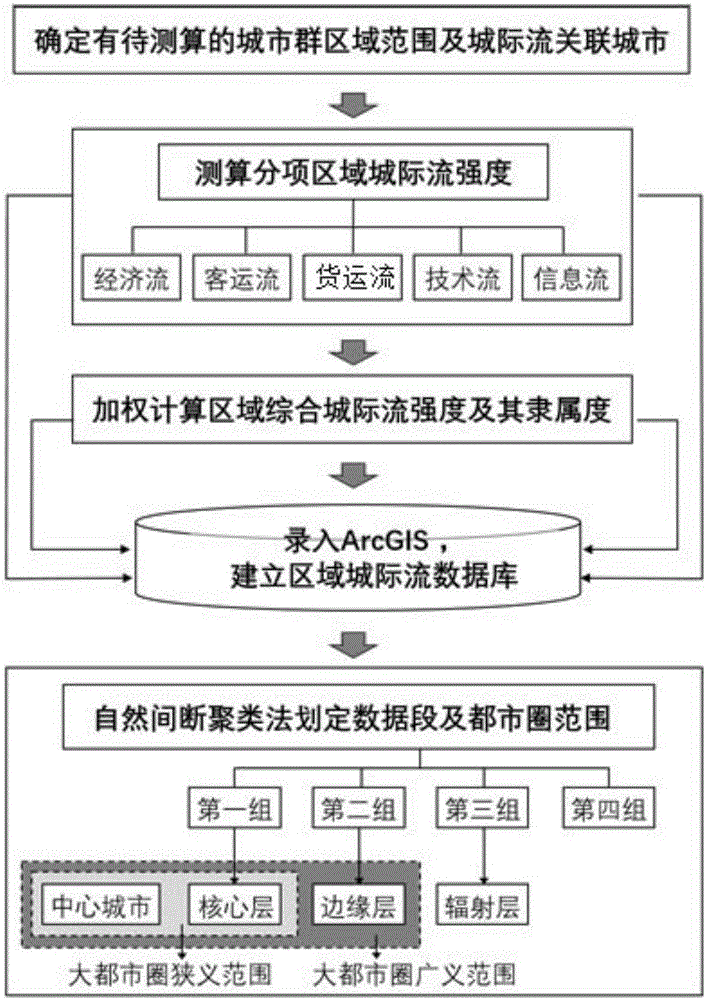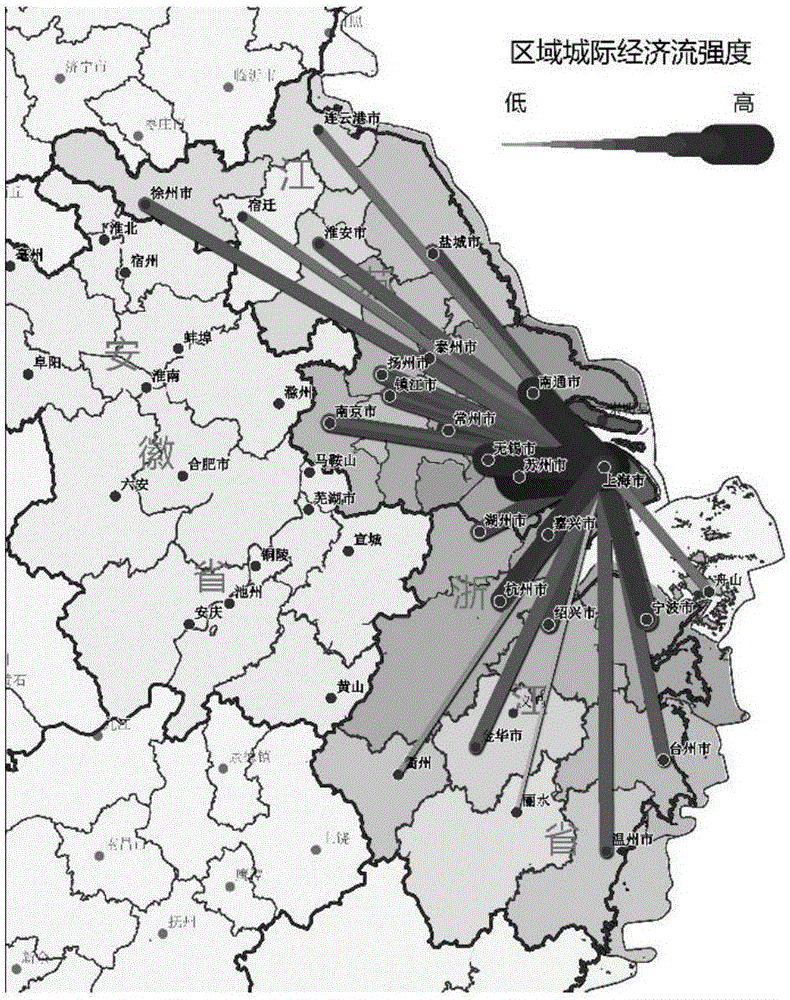Method for defining metropolitan regions based on regional inter-city flow intensity measurement model
A technology for metropolitan and intercity flows, applied to the quantitative analysis and calculation of the relationship between cities, and the delineation of large-scale specific regions, which can solve the problems of urban analysis that does not apply to large-scale regions, social factors that do not take into account the degree of correlation, Single element and other issues
- Summary
- Abstract
- Description
- Claims
- Application Information
AI Technical Summary
Problems solved by technology
Method used
Image
Examples
Embodiment Construction
[0056] The technical scheme of the present invention will be described in detail below in conjunction with the method case and accompanying drawings for delineating the Shanghai metropolitan area (with Shanghai as the regional central city) based on regional intercity flows, such as:
[0057] Step 1: Determine the urban agglomeration area centered on Shanghai as the spatial scope of the metropolitan area to be delineated, and clarify that the basic urban units to be measured in this area are cities above the prefecture level, and further determine the cities associated with intercity flows.
[0058] Step 1.1: Select the metropolis Shanghai (city code: A) as the regional core as the central city of the metropolitan area.
[0059] Step 1.2: Delineate the Jiangsu and Zhejiang provinces that are adjacent to (bordering) Shanghai, together with the central city of Shanghai, delineate the spatial scope of the regional intercity flow to be measured.
[0060] Step 1.3: Based on the spa...
PUM
 Login to View More
Login to View More Abstract
Description
Claims
Application Information
 Login to View More
Login to View More - R&D
- Intellectual Property
- Life Sciences
- Materials
- Tech Scout
- Unparalleled Data Quality
- Higher Quality Content
- 60% Fewer Hallucinations
Browse by: Latest US Patents, China's latest patents, Technical Efficacy Thesaurus, Application Domain, Technology Topic, Popular Technical Reports.
© 2025 PatSnap. All rights reserved.Legal|Privacy policy|Modern Slavery Act Transparency Statement|Sitemap|About US| Contact US: help@patsnap.com



